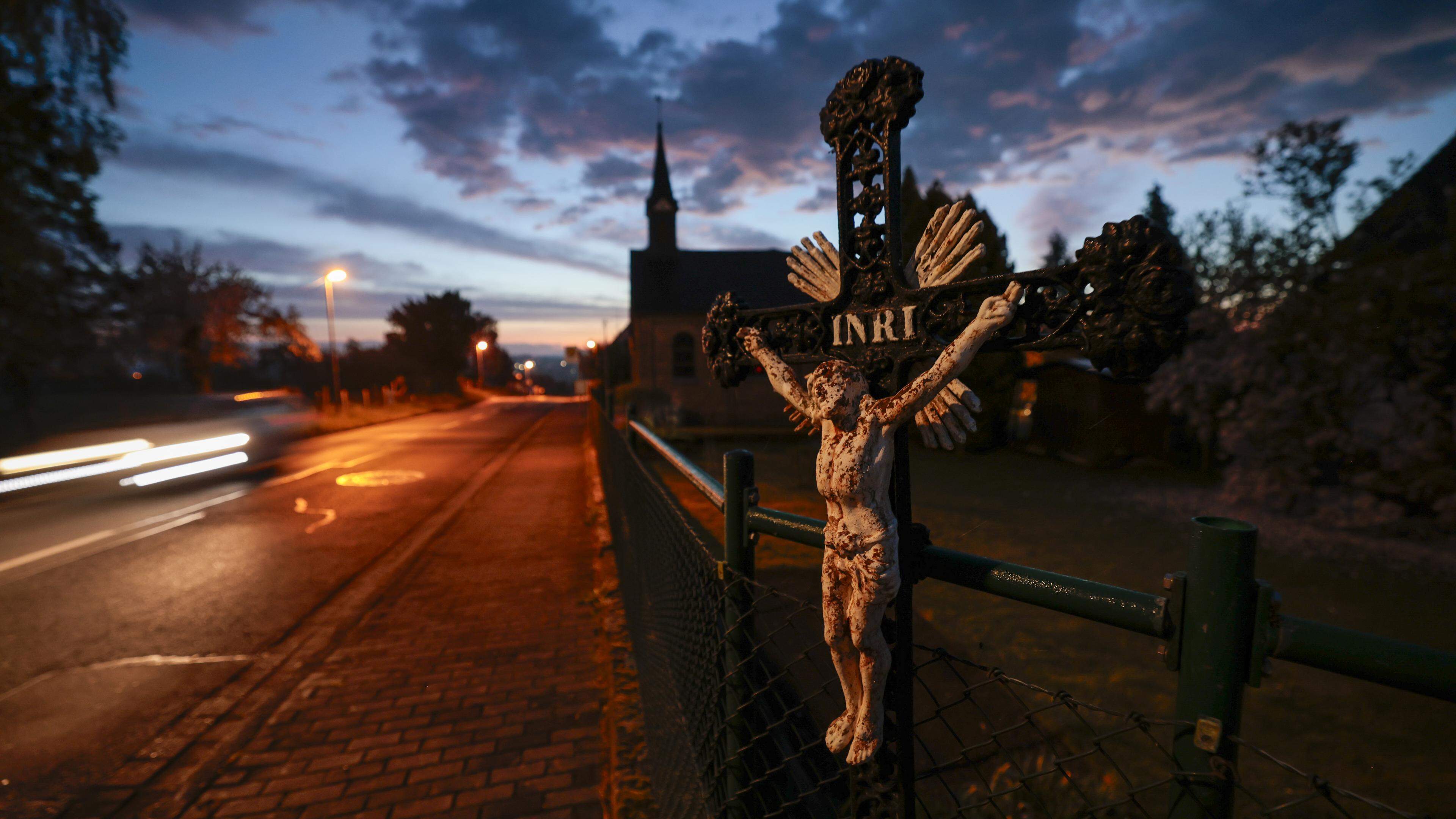Caricatures with cross: How much Jesus can satire show?

Jesus appears radiantly in a sun -drenched cloud. « I am with you every day, » he calls his disciples in a good mood, who stand together a bit skeptically and look up at him. « Is it real? » Asks one. And another says dryly: « At some point it will decide a council. » This drawing by Gerhard Mester, who the artist has for the caricature band « Whoever ears, hear! » For two reasons, made a smile for quotations from the Gospel of Matthew: First because you can imagine that the disciples of Jesus must actually have been very amazed at the time.
Mester’s caricature forms this plate, honest astonishment. It is a contrast to known representations of the resurrection. Here Christ does not float from golden gloss over the disciples, and they have not sunk on his knees.
The other reason why considered laughter must be mentioned. In history as meetings of the respective bishops and popes have repeatedly regulated, which is supposed to be the « true » teaching. Alone: The figure on the cartoon appeals to the council, although there was not even the Christian churches in their time.
« Many doubts in the Christian tradition were not cleaned up at the primary level of meaning of the healing knowledge, but the secondary level of canonization by the council, » says Professor Christian Hempelmann, theologian and humor researcher at the East Texas A & M University in Texan Commerce.
I do not put on crossing limits.
Gerhard Mester
cartoonist
The caricature therefore plays with the idea that the Catholic Church has determined over the centuries and continues to determine what should be believed. Gerhard Mester, according to his own statement, has never received a complaint about his works in the approximately 40 years of his work as a cartoonist. « I do not put on to cross borders, » he says.
How human can one show Jesus?
Mester’s book has been published by Edition Mormon. Photo: Edition chrismon
The 69-year-old, who lives with a crowd of chickens on an idyllic courtyard in Wiesbaden-Kloppenheim, put on Christian topics early on in his drawings. Maybe that’s the same because he originally wanted to become a social worker or theologian. It turned out differently. He studied graphic design in Kassel and soon noticed what he preferred to work on: social issues, justice, climate. Mester is Catholic, is interested in the church and has a diverse theological knowledge – but as pious believers, he would not necessarily describe himself.
Perhaps it is above all the attitude of the Christian religion that he appreciates and which he wants to show with his collection of the Gospel of Matthew. For him, the book is a Bible translation to the present day: « The advantage of caricatures is that they are didactically easy to use, » says Mester. « You can use it to introduce people to a topic low -threshold. »
Catholics are wrongly outraged: Dragqueens have not depicted the sacrament
But how far can a cartoonist go? Is it okay to present Jesus completely human – without awe and safety distance? Researcher Hempelmann answers this question with counter -questions: « Is Jesus Christ God or man? Both as well. Is the bread of the sacrament bread or participation in redemption through the sacrificed body of Jesus? »
With this everyday ambiguity, often undesirable, Mester also play. The abandoned grave of Jesus can be seen in another cartoon on Easter morning. In front of it stands a rage-burned Roman officer who points into the empty grave cavity and shouts at his legionnaire: « Do you know what that means, your bum?
Humor as an enrichment
According to Hempelmann, the joke of this drawing lies in the incompatible reads of the same event: « Why is the grave empty? For Christians, because Christ in the Easter miracle has also risen, as an essential step in the revelation of his divinity. But for the officer, the grave is empty because the body must have been lost due to the negligence of the subordinates. »
As he represent Jesus himself, the topic depends on the topic, says cartoonist Mester. « Sometimes he also reacts unchristian, » he says, and alludes to the history of the Canaanean woman, who asks Jesus in the Gospel of Matthew for healing for her daughter and is initially tangled.
« Jesus was not a superhuman and also had weaknesses, » says Mester. Showing that is not disrespectful. There are two important criteria for the artist in his work, as he explains. First: « A caricature must remain with the truth. » And: « Exaggeration is a trait of caricature ». With his drawings, Gerhard Mester wants to enable people to do a change of perspective that enriches them – and gives them humor as « inner freedom ».




:format(webp)/s3/static.nrc.nl/wp-content/uploads/2024/09/04085506/data120975205-8f5e99.jpg)



